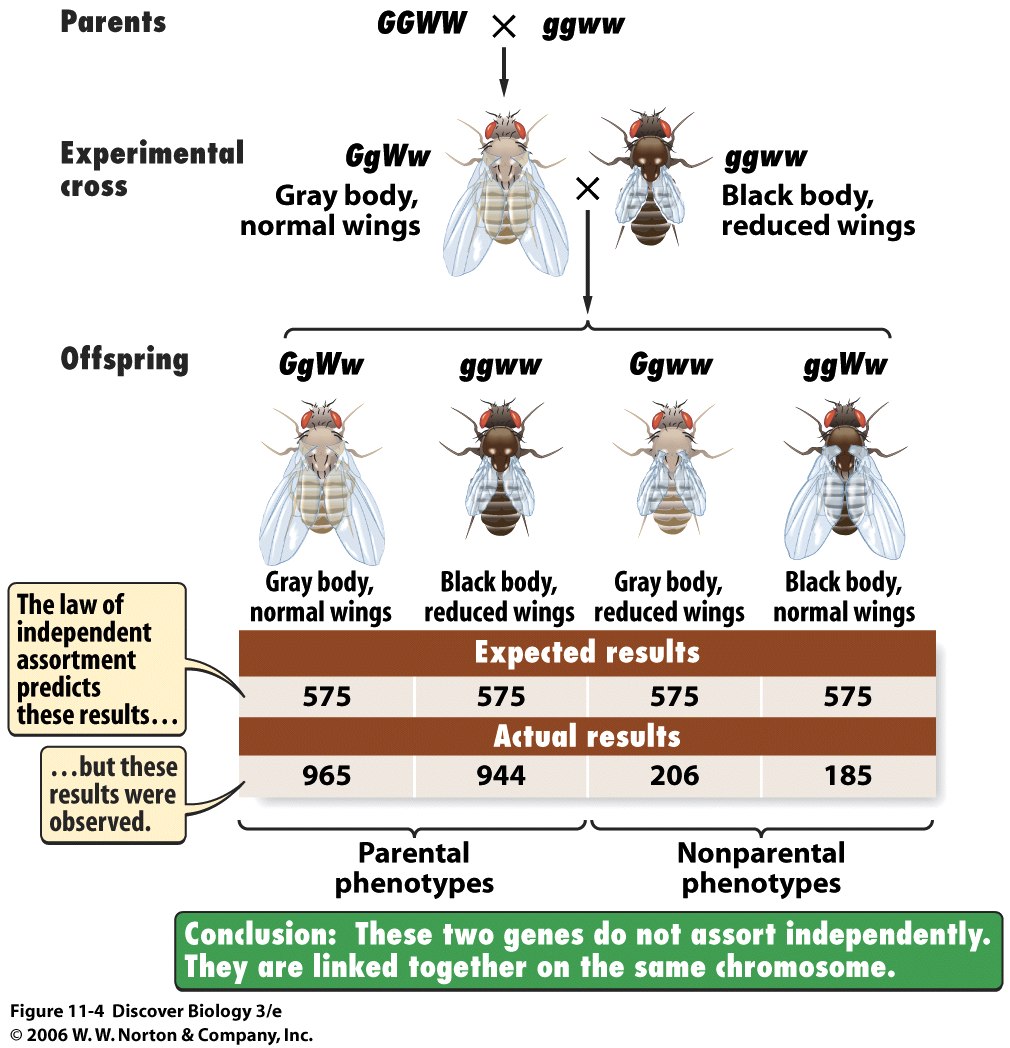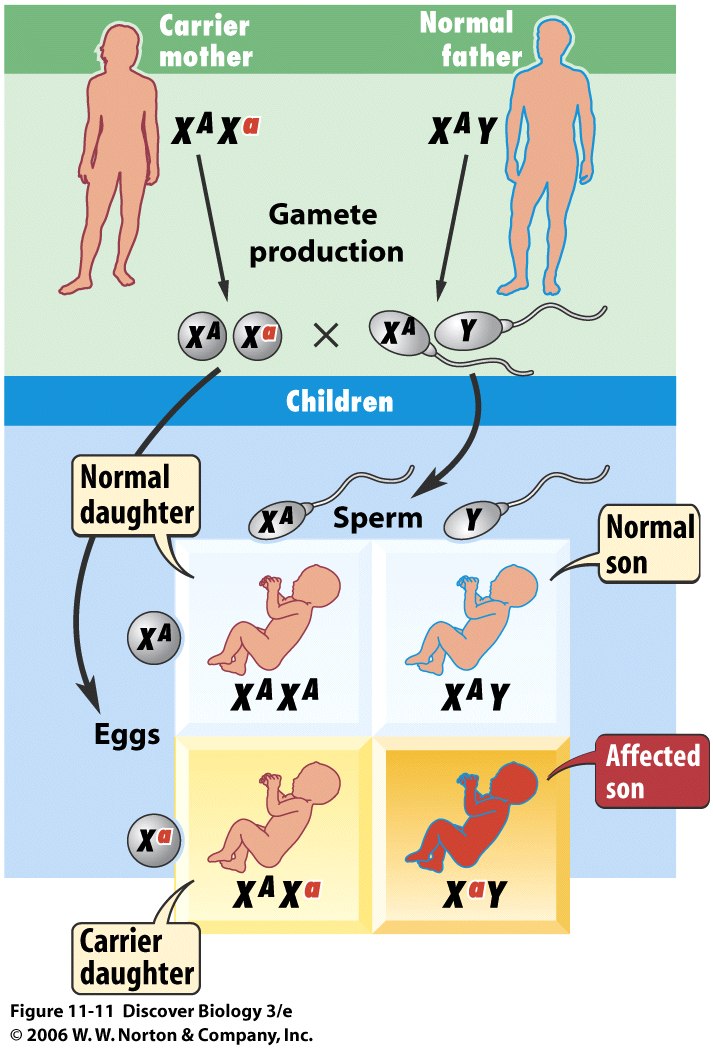
BIO 7: November 22 and 27 Preview
Mendel's Laws do not apply to all genes, but his work
was still incredible! Not all genes follow Mendel's Laws, because
1. Genes are parts of chromosomes and
2. Genes are DNA sequences coding for proteins which cause phenotypes, and the way proteins work can be affected by other molecules
Extensions of Mendel's Ideas based on genes = parts of chromosomes
¨ Linked genes: genes for different traits that are on the same chromosome do not assort independently
How do we know there must be linked genes? [How many chromosomes do humans have? How many genes do we have?]

Independently assorting genes are on different (non-homologous) chromosomes, which line up and separate independently of each other during meiosis I.
Linked genes move together during meiosis I, most of the time.
Why is it useful to know that certain genes are linked?
¨ Sex-linked genes: genes that are on one sex chromosome but not the other; not everyone has two of these
Some organisms determine sex using sex chromosomes
Human Karyotypes (sets of chromosomes)
Sex chromosomes: chromosomes differing in males and females
Sex-linked genes have predictable patterns of inheritance because each offspring gets one sex chromosome from each parent.

Autosomal genes: genes represented equally in males and females; because they are on autosomes
Sex-linked genes: genes carried on one sex chromosome, but not the other


Example of a human sex-linked gene: DMD gene = sequence of nucleotides in DNA making up the X chromosome
DMD (the symbol for the dominant allele) codes for a protein in muscle cells
dmd (the symbol for the recessive allele) due to a mutation in the DMD sequence codes for an abnormal form of the muscle protein, resulting in slow death of the muscle cells in a disease called Duchenne Muscular Dystrophy
Possible Genotypes Possible Phenotypes
in females
in males
Extensions of Mendel's Ideas based on Gene (DNA) à RNA à Protein à Phenotype
Phenotypic ratios differ from what Mendel observed, but genotypic ratios are the same
¨ Lack of Dominance: in a heterozygote neither allele is expressed over the other. 2 reasons:
Incomplete Dominance: one allele codes for active protein, other allele codes for inactive protein and the amount of active protein shows up in the phenotype.
e.g. In snapdragons: R = seq in DNA coding for an active protein for making red pigment
R' = seq in DNA coding for an inactive protein for making red pigment
Color phenotype depends on the amount of red pigment present
Possible Genotypes:
Possible Phenotypes:
Co-dominance: one allele codes for active protein, other allele codes for active protein slightly different in activity, and both activities show up in the phenotype.
e.g. In humans: IA = seq in DNA coding for an active protein for attaching A antigen
IB = seq in DNA coding for an active protein for attaching B antigen
Blood type phenotype depends on which antigens are attached to cells
Possible Genotypes:
Possible Phenotypes:
Contrast with Complete Dominance (What Mendel observed): dominant allele codes for active protein, recessive allele codes for inactive protein, and one dose of active protein works as well as two doses.
In humans: T = seq in DNA coding for an active enzyme to remove wastes from neurons
t = seq in DNA coding for an inactive enzyme to remove wastes from neurons
Having just a little active enzyme is sufficient for waste removal and a normal phenotype; having no active enzyme results
in waste accumulation and Tay-Sachs Disease
Possible Genotypes:
Possible Phenotypes: